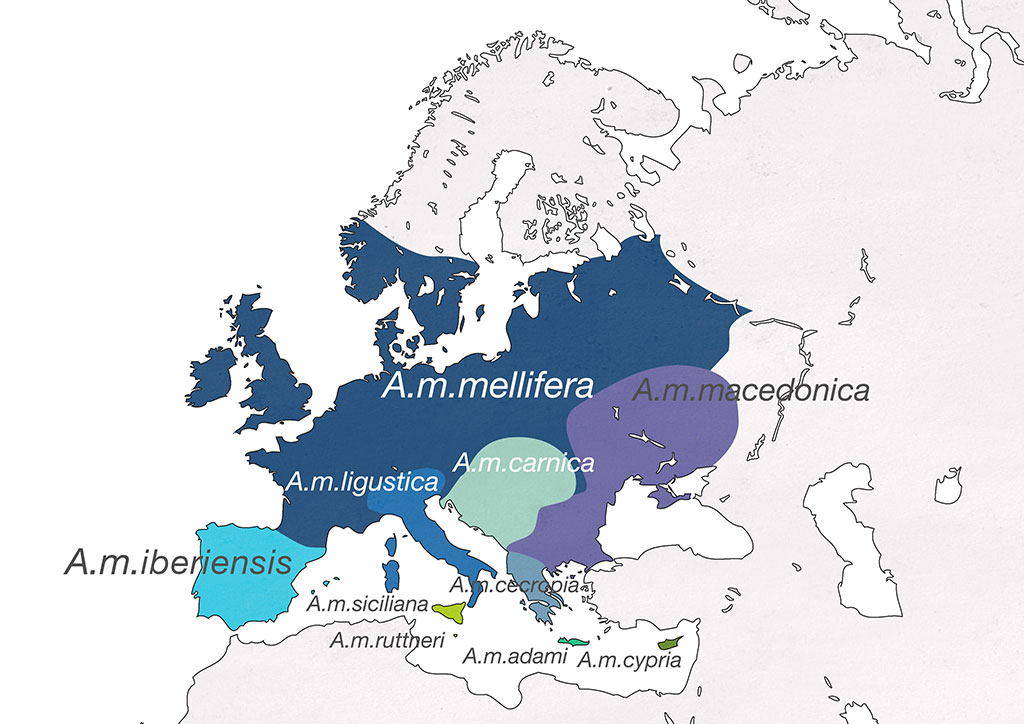Europe is the home of at least 10 different honey bee subspecies, each subdivided in a spectrum of local populations. The high genetic diversity results from long lasting continuous selection under diverse climatic and environmental conditions. Before man started to care for bees and protect them from diseases, reproduction was limited to colonies which successfully coped with pathogens, pests and environmental challenges. That’s why the natural diversity of bees preserves genetic resources for selection for disease resistance and adaptation to future changes in climate and land use.

Although there is clear scientific proof that the performance and survival of honey bees strongly depend on their local adaptation (significant genotype - environment interactions) a limited number of breeding lines, mainly from the two subspecies Apis mellifera carnica (Carniolan honey bee) and Apis mellifera ligustica (Italian honey bee) are commercially spread throughout Europe and other parts of the world. The import of these bees results in a hybridization of local populations and can end up in a total loss of unique genotypes.
In an effort to:
- preserve the natural honey bee diversity,
- improve honey bee performance and vitality and
- reduce colony losses and the dependence on therapeutic treatments
the SMARTBEES project will support local breeding activities in all European honey bee subspecies with a special focus on so far neglected populations. State of the art techniques for performance testing, identification of resistance traits, data evaluation and program management will be implemented.
The success of this strategy fully relies on local contribution. Beekeepers, honey bee breeders and scientists need to cooperate to achieve a sufficient population size, to realize an exchange of test queens and to manage data evaluation, controlled mating, queen marketing and further activities.
This performance testing protocol outlines the basic standards for the beekeepers’ participation in the SMARTBEES project. Please contact us for any questions or for practical suggestions. The project will offer a unique chance to sustainably improve the vitality and productivity of honey bees on a European level. The contribution of dedicated beekeepers and their local organizations is highly appreciated!
This application is developed based on:
Performance testing protocol (2015, v 1.0), Uzunov A., Büchler R., Bienefeld K.
(www.smartbees.eu)
Published by and available from:
Landesbetrieb Landwirtschaft Hessen
Bieneninstitut, Erlenstrasse 9, 35274 Kirchhain, Germany
Tel.: ++49 (0) 6422 9406-11
E-mail: [email protected]
WEB: www.smartbees.eu
© 2015 Landesbetrieb Landwirtschaft Hessen All rights reserved
No part of this publication may be reproduced, stored or transmitted in any form or by any means, electronic, mechanical, photocopying, recording, or otherwise, without written permission in writing from the authors.
ISBN: 978-3-9817984-0-1
Photos, graphics: D. Schuller, R. M. Francis, R. Büchler, A. Uzunov
Acknowledgment: We are grateful for the support provided by Bjørn Dahle, Magnus Ljung, Per Kryger, Cecilia Costa, Katherine Roberts, Bruno Binder-Köllhofer and Jakob Wegener.